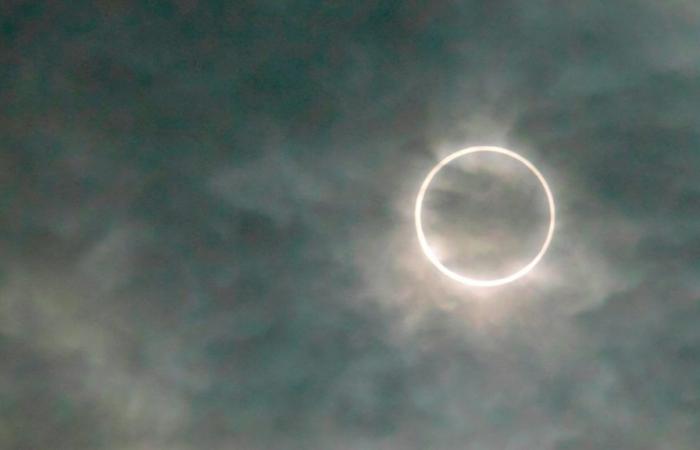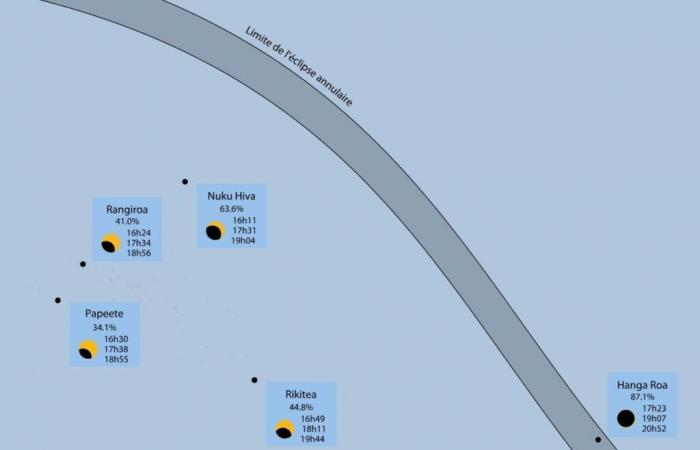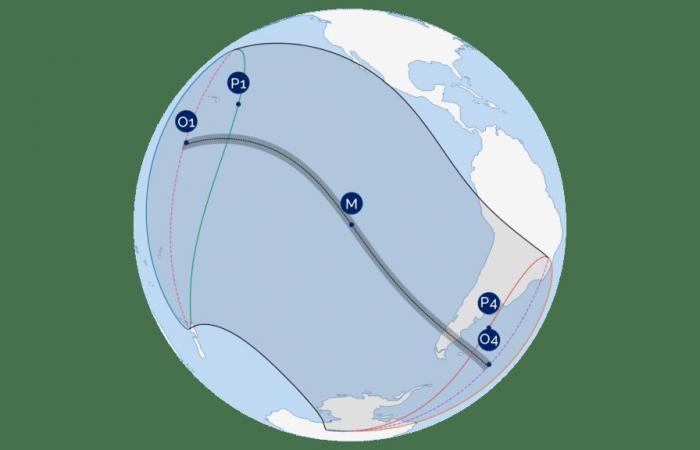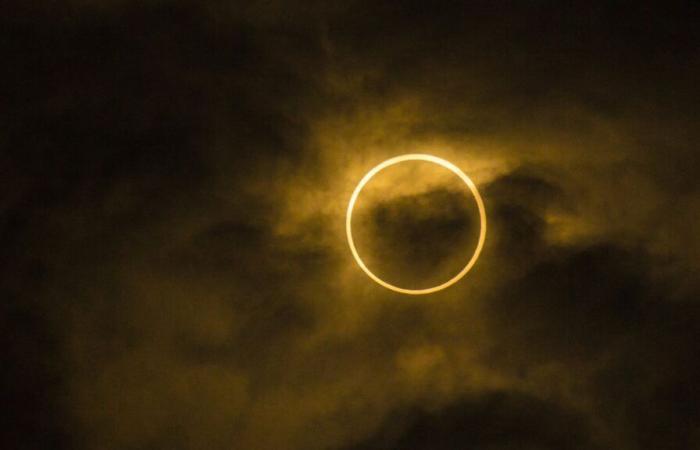A solar eclipse occurs on October 2, 2024. This annular solar eclipse will not be visible everywhere on the planet. Can the French hope to actually observe the Moon obscuring the Sun?
There are two solar eclipses in 2024. The first occurred in April, the second is imminent. On Wednesday, October 2, the Moon hides the Sun during an annular eclipse. At the maximum of the phenomenon, we will see a “ring of fire”, since the apparent diameter of the Moon will be smaller than that of the Sun.
Will the French see this annular eclipse?
Unfortunately, mainland France will not be in the visibility zone of this solar eclipse. However, it is possible to watch the solar eclipse online and live.
However, the eclipse will be seen in its partial phase from French Polynesia, and almost in its annular phase from Saint-Pierre and Miquelon, indicates the Institute of Celestial Mechanics and Ephemeris Calculation (IMCCE).
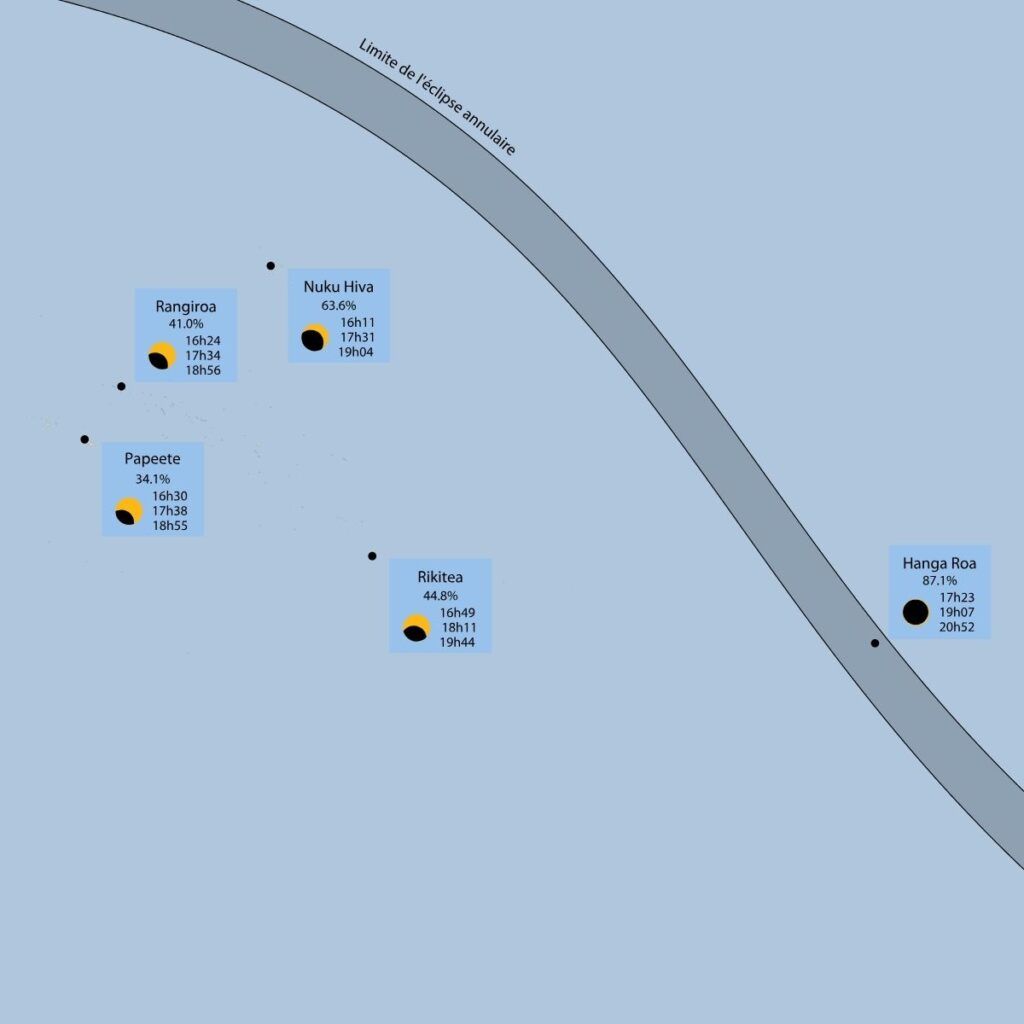

More broadly, the eclipse is visible from the southern hemisphere of the globe. The phenomenon begins in the northern Pacific Ocean and ends in the Atlantic Ocean. The eclipse will be visible in the form of a partial eclipse in Polynesia (Windward Islands, Leeward Islands, the Tuamotu Archipelago, the Gambier Archipelago, the Austral Islands and the Marquesas Archipelago) and on many other South Pacific Islands ”, according to the IMCCE.


How long does the solar eclipse last on October 2, 2024?
This entire eclipse lasts 6 hours and 3 minutes, including 3 hours and 48 minutes for the annular phase — often considered the most impressive to observe. The following table indicates the general circumstances of the event.
| Phases of the eclipse | Instant (Paris time, UTC+2) |
|---|---|
| Start of the general eclipse | 17h43 |
| Beginning of the annular eclipse | 6:50 p.m. |
| Maximum of the eclipse | 20h45 |
| End of the annular eclipse | 22h39 |
| End of the general eclipse | 23h47 |
What happens during a solar eclipse?
For a solar eclipse to occur, there must be an alignment between the Earth, the Sun and the Moon. Thus, the Earth’s natural satellite obscures the Sun during the eclipse. There are several types of solar eclipses. That of October 2, 2024 is described as annular. This means that the diameter of the Moon is not large enough to completely hide the Sun. At the moment of maximum, we can see a “ring of fire”.
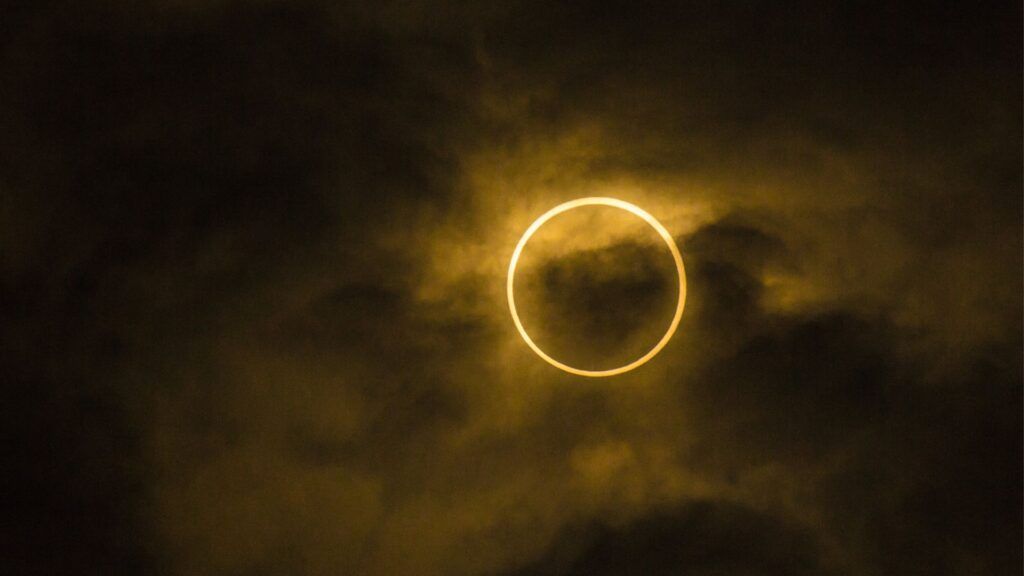

There are also total solar eclipses, partial solar eclipses and even hybrid eclipses.
How to observe a solar eclipse?
If you are lucky enough to see this solar eclipse, or another, take the greatest precautions so that the observation does not quickly turn into a nightmare. To watch a solar eclipse safely, it is imperative not to Never observe the Sun with the naked eye — and not with sunglasses either. Even when the star is very obscured by the Moon, the risk of burning the eyes is real.
It is therefore essential to have eclipse glasses (without reusing an old pair lying around your house). Contact an optician or a store specializing in astronomy to obtain protective glasses, bearing the CE conformity mark. Remember to take breaks while observing. Without glasses, refrain from looking at the Sun and instead observe the eclipse indirectly with tips.
This content is blocked because you have not accepted cookies and other trackers. This content is provided by YouTube.
To be able to view it, you must accept the use carried out by YouTube with your data which may be used for the following purposes: allowing you to view and share content with social media, promoting the development and improvement of products from Humanoid and its partners, display personalized advertisements to you in relation to your profile and activity, define a personalized advertising profile, measure the performance of advertisements and content on this site and measure the audience of this site (find out more more)
By clicking on “I accept all”, you consent to the aforementioned purposes for all cookies and other trackers placed by Humanoid and its partners.
You can withdraw your consent at any time. For more information, we invite you to read our Cookies Policy.
I accept everything
Manage my choices
Everything you need to know about the star of the solar system, the Sun

